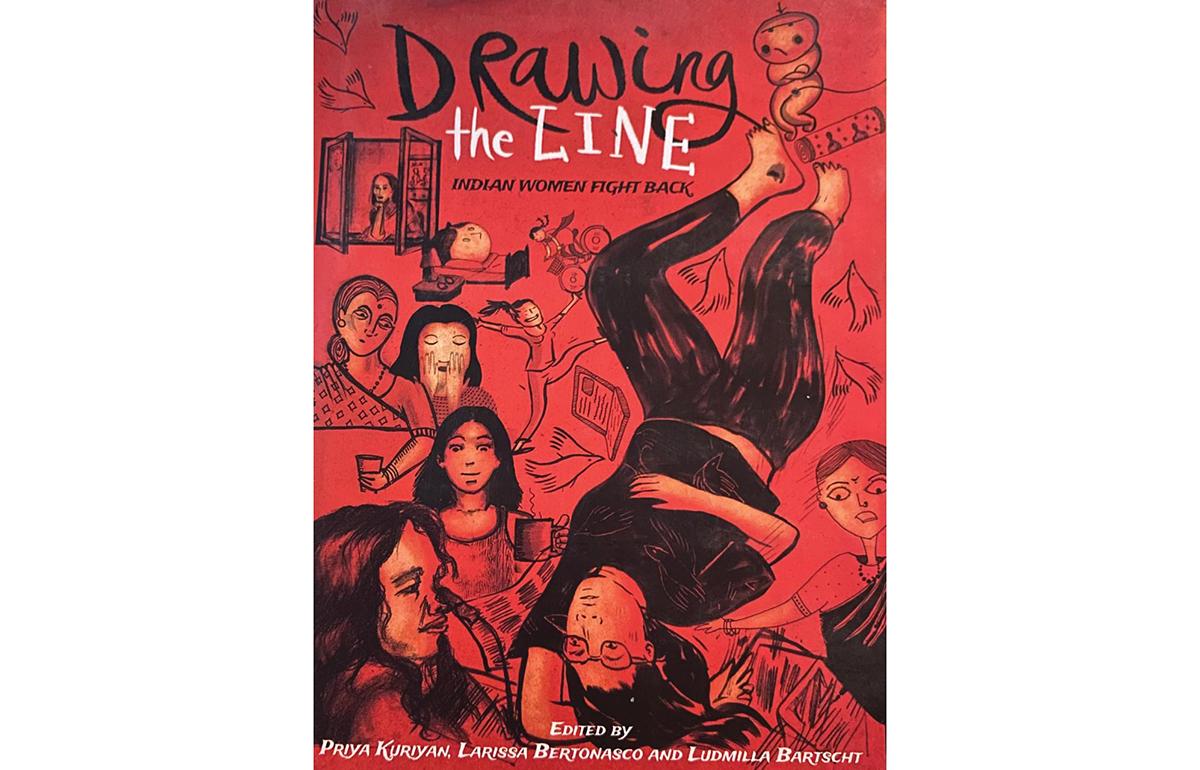
by Anu Sugathan, PhD Student, Department of English
My interest in graphic narratives as a research topic emerged during my master of philosophy studies. While contemplating my thesis, I discovered various Indian graphic novels by contemporary writers and artists that brought back memories of my childhood comic books like Balarama, Balabhumi, and Champak. However, unlike earlier comic books, these graphic novels stood out due to their distinctive style, paper quality, and thematic depth. As a PhD student at the University of Oregon, I aim to broaden my understanding of Indian graphic novels to encompass South Asian and South Asian American graphic narratives. My primary goal is to underscore the critical importance of developing context-based theories, particularly for the study of non-Western cultural products. As part of this focus, for my CSWS project I explored graphic narratives that address gender within specific cultural contexts to understand their perspectives and implications.
I specifically examined graphic narratives by female authors and artists of South Asian origin, exploring how they address gender, identity, and sexuality through unique artistic and narrative styles. I aimed to show how these portrayals challenge traditional views of South Asian women and their roles in society. My research argues that stories of South Asian and South Asian American women, especially those created by the women themselves, offer a non-Western perspective and rethink how women are depicted in graphic narratives from these cultures, both in terms of form and themes. I focused on analyzing the works that address questions about sexuality, queer identities, and religious and social aspects.
For the project, a selection of works was chosen that showcased diverse cultural backgrounds and thematic representations by various authors and artists of South Asian origin. As one of the few queer graphic novels authored by a woman in India, Kari delves into existential questions, personal conflicts, and societal expectations, intertwining these elements to explore the protagonist’s internal struggles and the broader social and urban landscapes they reflect. The Gay Zine anthology features a diverse array of female characters, offering varied representations of queer desi women. These narratives encompass everything from stories about homosexual women in unfulfilling or abusive heterosexual relationships, to works that celebrate the beauty and sensuality of female bodies.
The retelling of the epic Ramayana through the graphic novel Sita’s Ramayana offers a profound exploration of gender dynamics and cultural norms within South Asian society. By shifting the narrative perspective to focus on Sita’s experiences and struggles, these narratives challenge traditional perceptions of womanhood derived from Hindu mythology. Bystander anthology is a collection of graphic narratives that explore themes of gender and identity across the South Asian region from the perspective of the bystander—the other. Drawing the Line: Indian Women Fight Back is an anthology that emerged as a response to the infamous 2012 Nirbhaya gang rape case in Delhi, which sparked widespread protests and a renewed feminist discourse in India. The anthology was produced through a week-long workshop organized by the Goethe-Institute and Zubaan Books, an independent feminist publisher in New Delhi.
Sarah: The Suppressed Anger of the Pakistani Obedient Daughter contributes to the broader discourse on women’s rights and gender equality in South Asian societies by focusing on Sarah, a young Pakistani girl who struggles with the pressures of conforming to traditional roles and the expectations placed upon her as an obedient daughter. Pashmina deals with the themes of identity, heritage, and self-discovery through the story of a young Indian-American girl named Priyanka Das. It offers a rich exploration of Indian culture, traditions, and mythology.
These works are examined alongside scholarly literature from both the Global South and Global North, which delve into constructions of gender, sexuality, and eroticism often overlooked in mainstream gay and lesbian studies, religious interpretations, and socio-cultural understandings. For instance, Ruth Vanita and Saleem Kidwai’s analysis of same-sex love in Indian literature spans over two thousand years in Same-Sex Love in India: Readings from Literature and History, encompassing Hindu, Buddhist, Jain, Perso–Urdu texts, and modern fictional writings in various Indian languages. Their work reveals intricate discourses on Indian homosexuality, which challenges Foucault’s notion of homosexuality as a nineteenth-century construct, and gives us a framework to analyze contemporary queer desi graphic narratives in this light. Such analyses pave the way for further exploration of South Asian and other non-Western legacies, integrating Western perspectives to highlight differences and uncover cross-cultural influences.
Furthermore, I am thankful for the CSWS Graduate Student Research Grant, which enabled me to focus my attention on this project and reference several works that I aim to include in my dissertation. I was able to further develop papers from it and presented one, titled “Revisiting Ramayana: Gender Dynamics and Moral Ambiguity in Sita’s Ramayana,” at the 2024 Annual Conference of the Canadian Society for the Study of Comics (CSSC/SCEBD) held at Université du Québec à Montréal.
—Anu Sugathan received a 2023 CSWS Graduate Student Research Grant for this project.

